There are so many different fields in writing.
From direct response copywriting to SEO content, there’s no shortage of niches to pursue.
Whether you’re a freelance writer looking for work or a business owner trying to produce technical material yourself, the same rules apply.
I’ve written a fair amount of technical material for my own business and clients, so I’m going to share my insight with you ahead of time.
You’ll learn how to write technical material, the different types, and tips to make the process easy as pie.
But before we begin, what is technical writing?
It’s the process of writing technical content like business plans, user manuals, and other documents that are technical in nature.
This means that they lead the reader through steps, teach them how to use a tool like software, or cover a complex topic in a practical way.
Let’s begin by talking about what skills are needed to become a good technical writer next.
Technical writing skills
It’s easy to crack your knuckles and jump straight into something you’ve never done before.
Heck, I do it all of the time.
It’s one of the best ways to get your feet wet and experience doing something new.
However, technical writing takes certain skills and preparation before you master it, including the following.
Being able to research thoroughly
As a technical writer, you’ll need to know industries and companies like the back of your hand.
How do you do that?
Research.
This begins with investigating the company you’re working with. Those that are writing technical content for their own business can take the same steps, just in an internal sense.
You will want to know facts like:
- What products or services do they sell.
- Who their target audience is.
- The value proposition of the business.
- Their mission statement, as you can refer to this throughout the writing process.
I would recommend speaking on the phone with someone in the company to have these questions answered.
They will be able to provide you with heaps of knowledge in a small amount of time.
However, let’s say we were writing technical material for a company like Marketo.
We would visit their website and navigate through every page, dissecting their services, values, voice, and other elements.
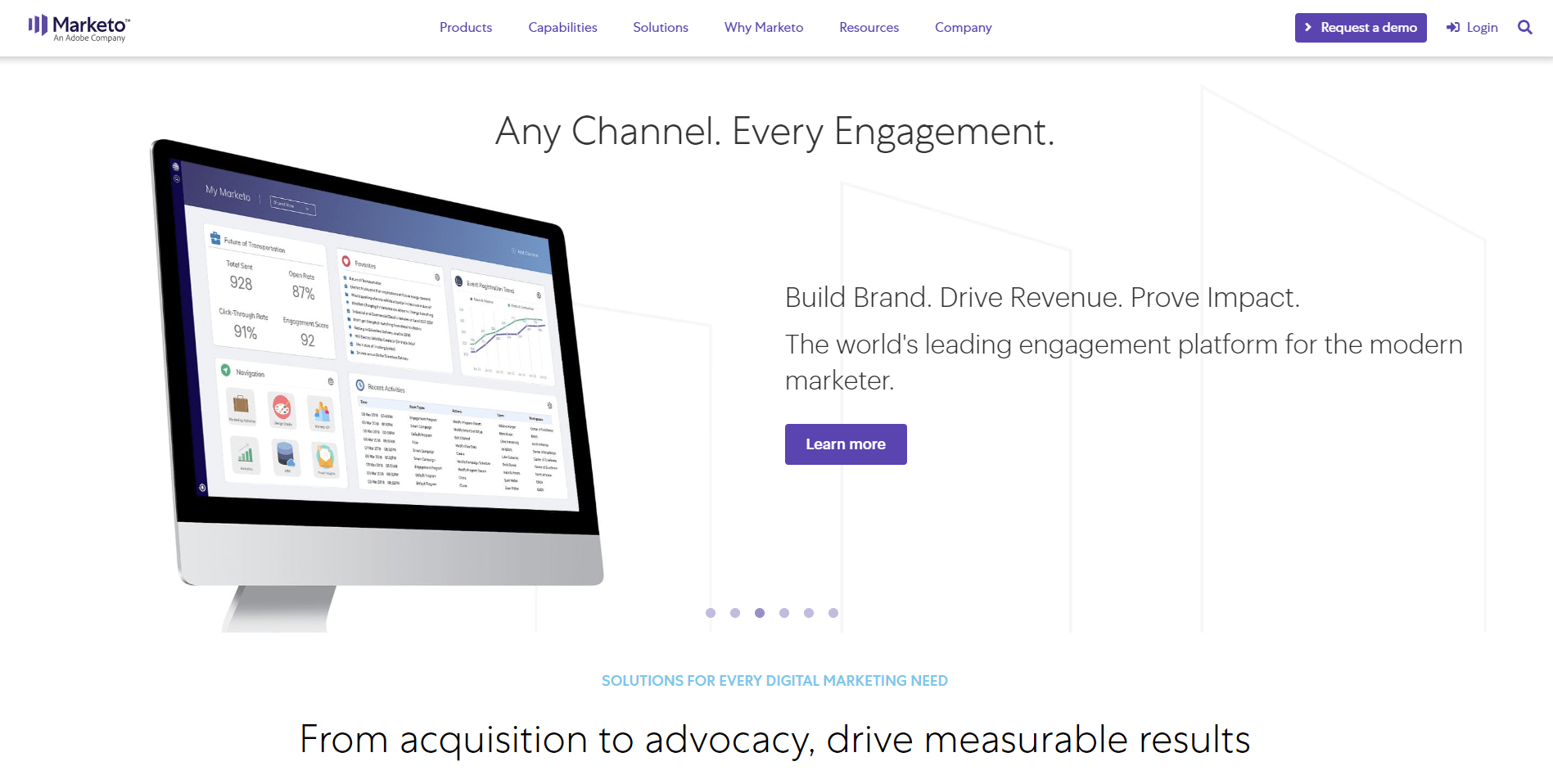
Take notes on things like:
- How they format content, and what voice they use.
- What calls to action do they commonly have?
- How they make themselves different from competitors.
- What comments do customers have in reviews?
- The product or service you will be writing about.
All of these things will change how you produce technical material and align them more accurately with the brand it’s being written for.
Understanding user experience
User experience, or UX for short, is the experience a user will have navigating a product of any sort.
In our case, it’s technical writing, but it can literally be applied to anything.
In fact, 57% of consumers wouldn’t recommend a website if it had a poor mobile design.
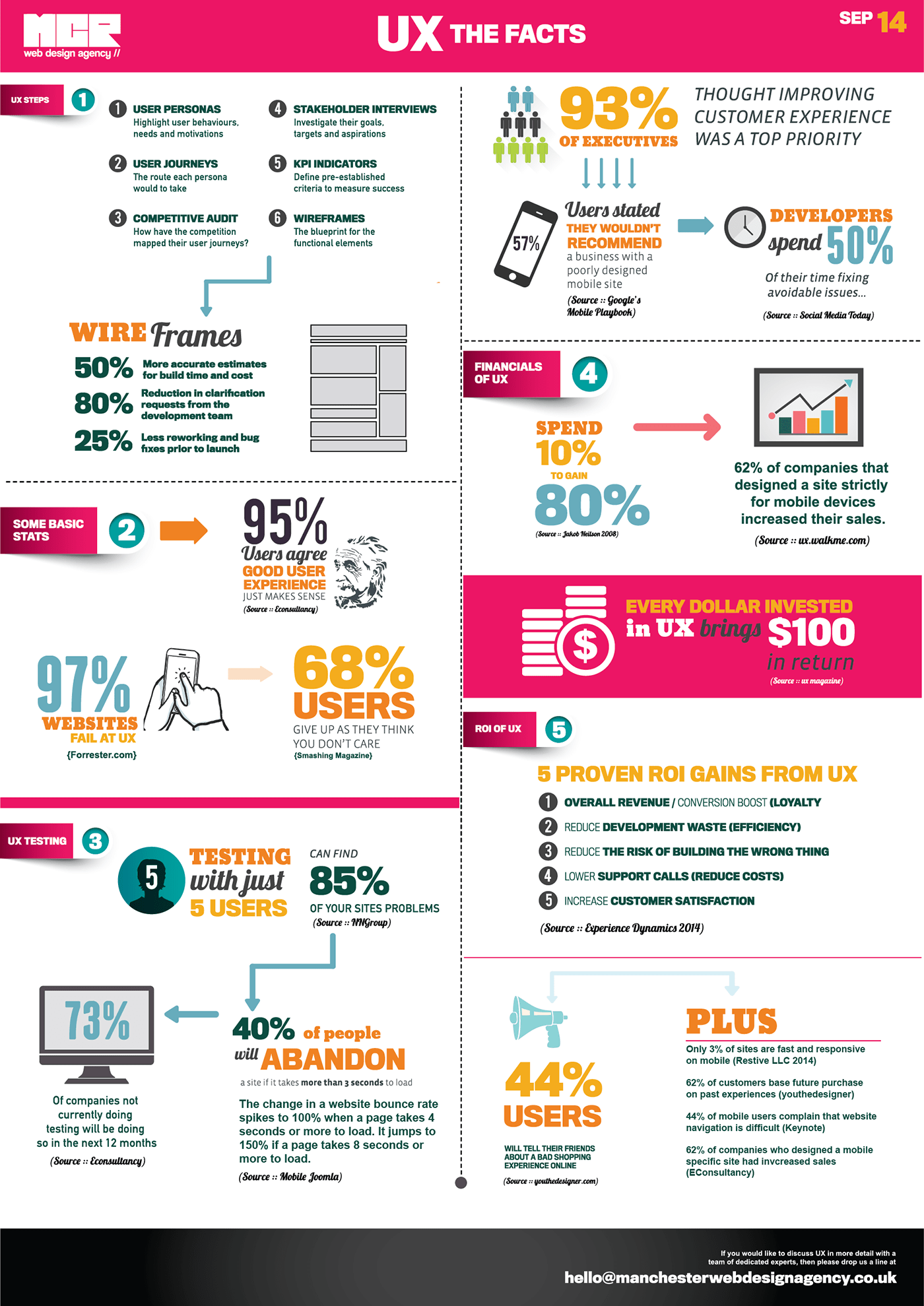
The same goes for content.
If it is hard to navigate and read, people won’t finish it, let alone share it with other people.
93% of executives in companies also agree that improving customer experience is a top priority, and it should be for you, too.
So, how do you go about doing this?
Firstly, map out your content before you begin writing in a strategic way.
Every point and section should flow logically into the next.
Look at Shopify, for example.
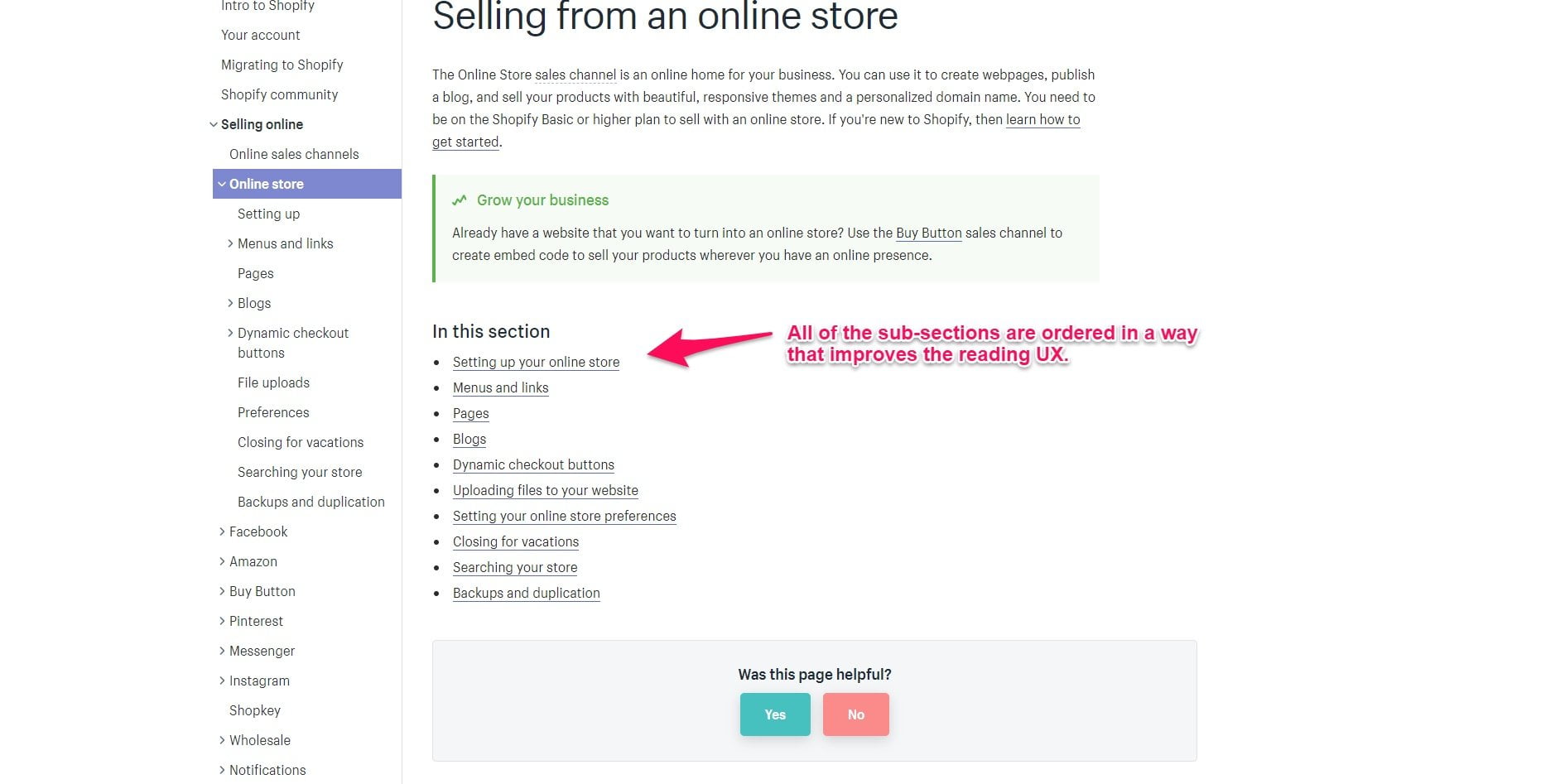
The “Online store” section of their user manual begins by teaching users how to set up an online store before creating menus, links, pages, and optimizing preferences.
This makes perfect logical sense.
Someone trying to set up an online store for the first time isn’t thinking, “Wait, how do I attach an app that automates my ordering processing?”
They want to learn the fundamentals, which is exactly what the manual teaches in proper order.
When you begin a technical writing project, take the time to map out the different chapters, units, etc.
Organize them in an order that makes sense from the perspective of the reader. You want each next piece of information to play off of the previous one and the overall reading process as non-confusing as possible.
It should look something like this:
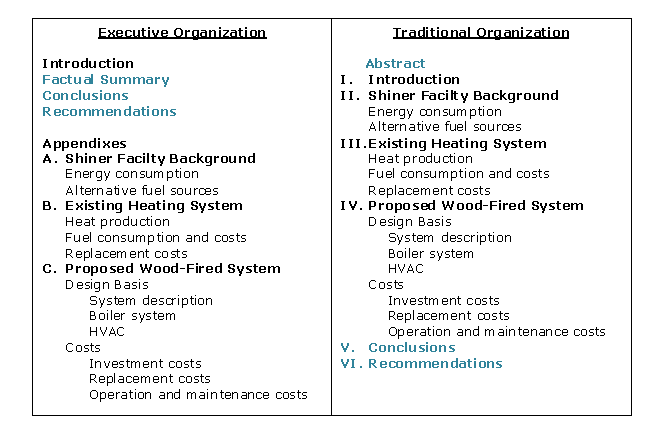
This helps make the writing process easier for you.
You won’t have to sit around wondering what to write about next because it’s all neatly laid out in front of you.
It’s a win-win.
You can also use a tool like MindMup to create a mind map for preparing technical projects.
Begin by clicking the “Get Started” button on the homepage.

You can then add different components, such as nodes, images, and text.
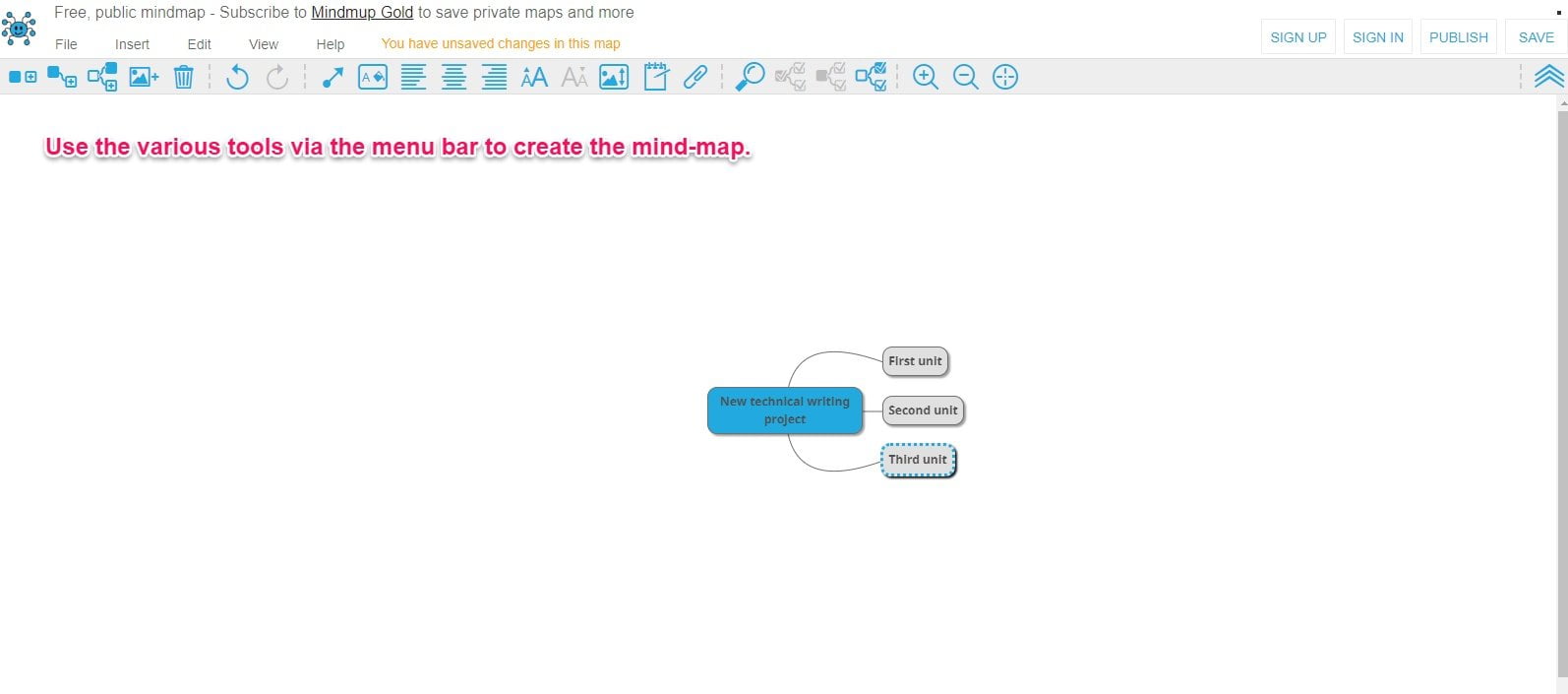
Use this to organize yourself, come up with new ideas, and flesh out projects before you execute them.
Understanding staple copywriting strategies
Being a technical writer will require you to understand fundamental copywriting principles.
Not all copy is written to sell. Different material has varying audiences and goals, which you need to be able to identify and align with.
One of the most important things to remember is that the goal of technical writing is to educate.
For example, if you’re writing the user guide to an e-commerce platform, the reader is most likely already a customer and trying to master the software.
You don’t need to sell too hard on the product because they’re already paying.
This means that you need to put focus on laying out the steps for each section as simply and clearly as possible, making them stay a customer.
See where I’m going with this?
Good copywriters are like chameleons. They can blend into any industry and target audience.
I love using the AI copywriting tool Jasper to help me with these processes.
Additionally, calls to action are important throughout technical writing.
These tell readers to take a specific action, such as signing up, collecting a free resource you’re extending, or something else to get them further in the sales funnel.
Continuing off of the Shopify example from earlier, you can see that they include a call to action for readers to try their platform for free.
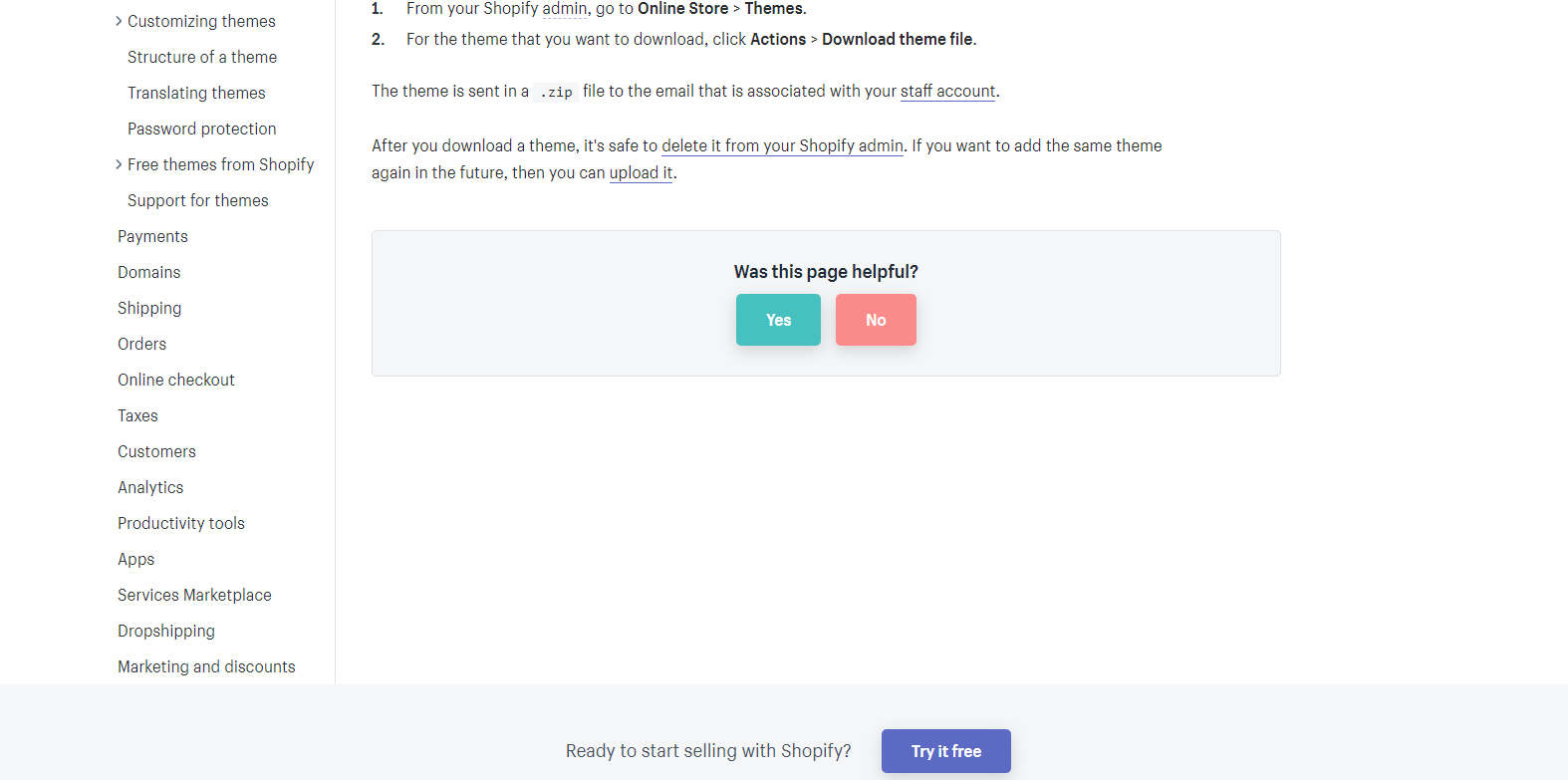
Another copywriting technique I would suggest keeping in mind is features versus benefits.
It’s easy to only speak about the features of a product or service but to forget that the benefits are more important.
Remember it like this…
Features are factual.
The benefits are emotional.
Sure, an e-commerce platform gives you an online storefront and marketing tools to grow it. Those are features.
The benefits would be that users can make a living online, be financially independent, and be in charge of their lives.
When you’re writing technical content, don’t forget to elaborate on what features, specs, and similar information actually do for the user.
This will interest them a lot more, and they will be likely to finish the content.
Check out my courses on copywriting to learn more.
Types of technical writing
There are many different types of content material, with the following being the main ones.
User manuals
Have you ever ordered a product, and it came with a detailed manual explaining how to use it?
Someone wrote that!
User manuals are often very long pieces of technical material that guide customers through using something step-by-step.
When writing a user manual, I recommend using as little jargon and complex vocabulary as possible.
You want the content to be digestible and comfortable for anyone to read.
A big reason for this is that the average U.S. reading level is 8th grade.
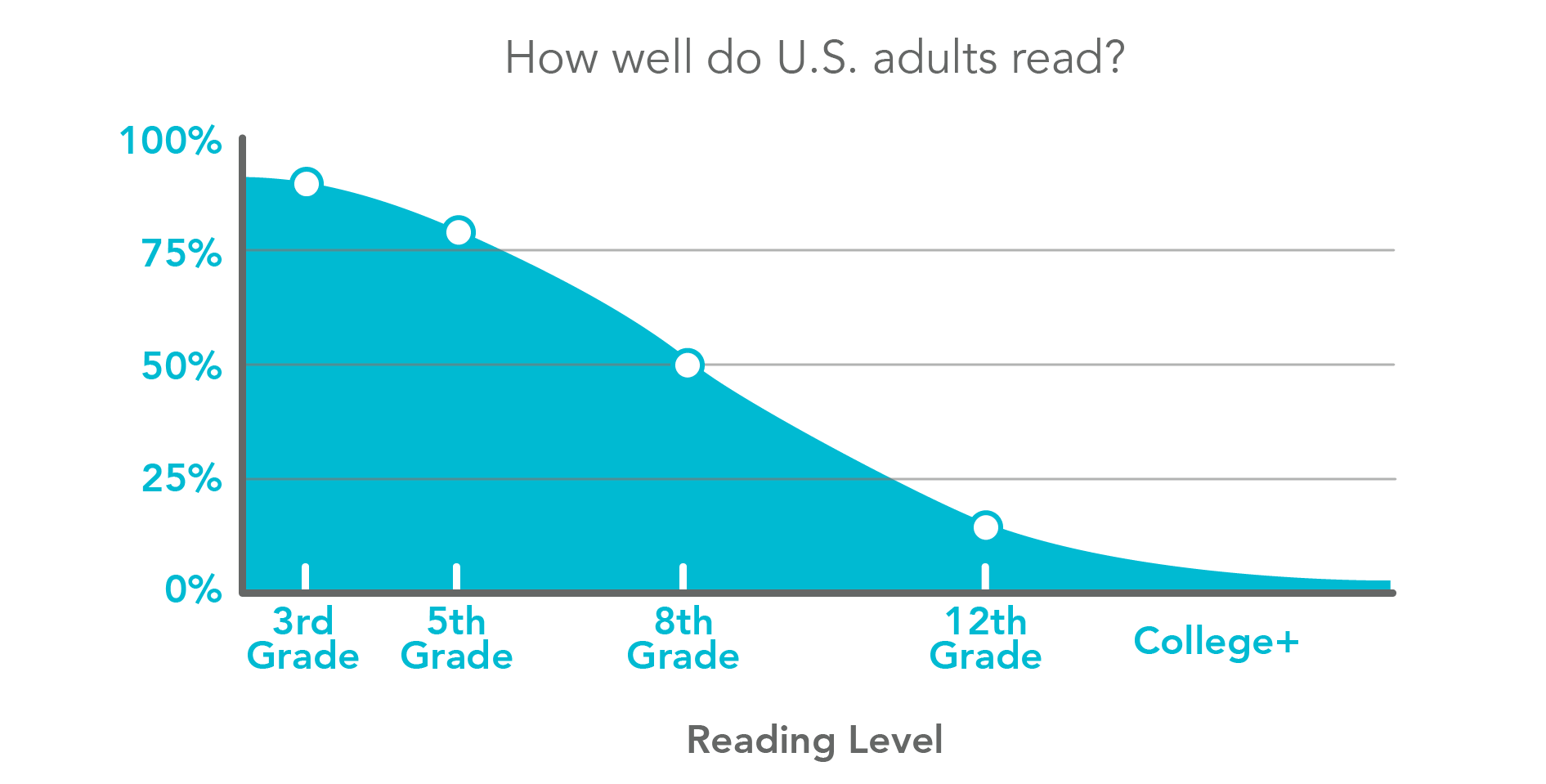
That means if you make content too complex, you reduce the number of people who can grasp it.
However, think about the opposite.
If you make it simple, those with deep knowledge about the topic can still understand, and beginners won’t struggle.
Everyone wins!
Additionally, really focus on detail when writing user guides.
You want to show readers how to perform every little step.
Even something as simple as clicking a button should be outlined.
There should be no hiccups or moments where the user asks themselves, “What do I do next?”
Microsoft’s quick start guide for Word is a solid example of a user manual to mimic.
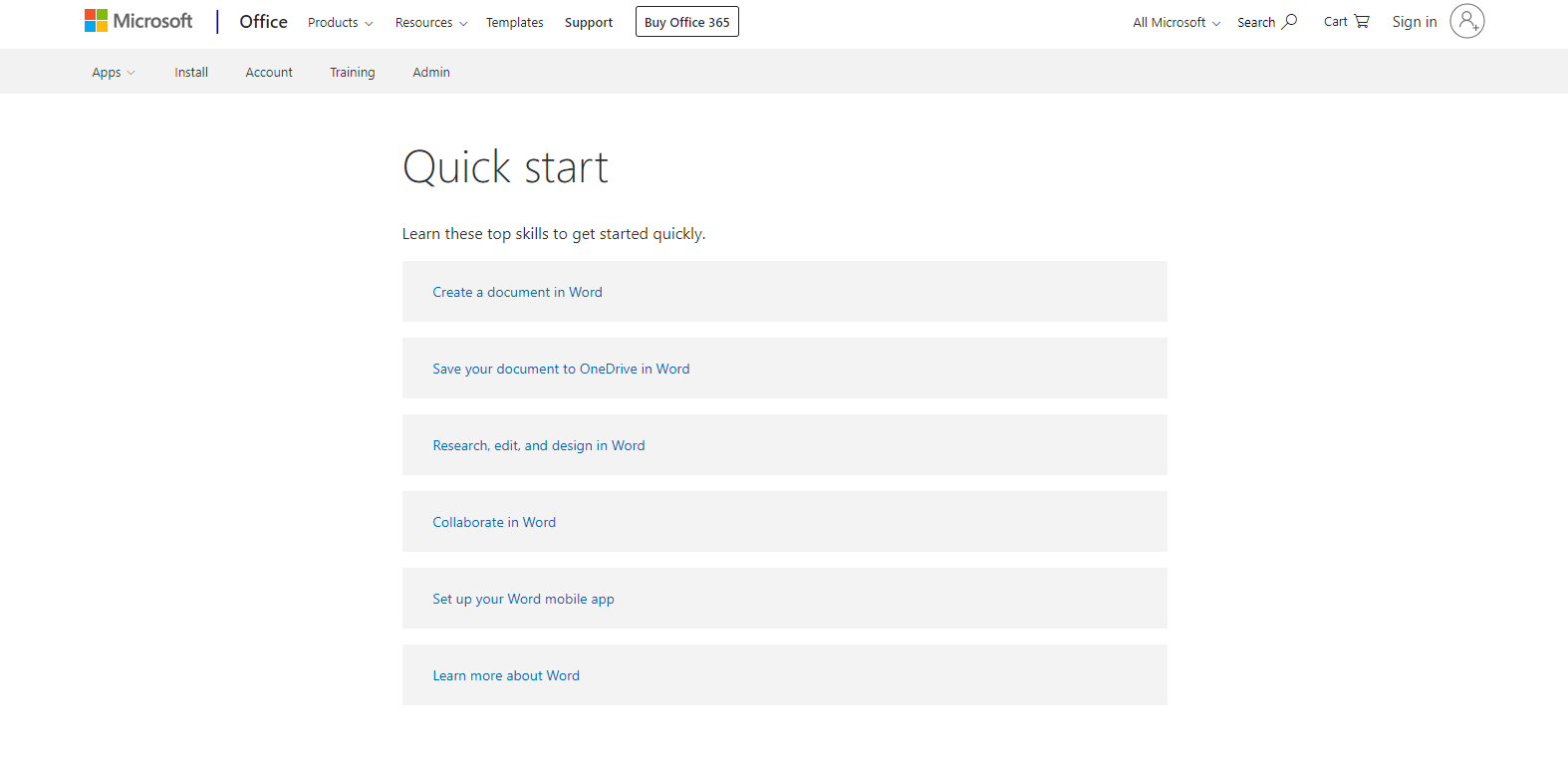
Standard operating procedures
Standard operating procedures, or SOP for short, are sets of rules and instructions for members of a company to follow.
These can pertain to any operations with a business, such as marketing, advertising, human resources, communication, or customer service, for example.
SOPs are very important because they set the tone of a company’s behaviour and output.
If you were to write the standard operating procedures for customer support, you would have a large influence on how a client treats their users.
This means that you need to be aware of the responsibility you have when writing this type of technical material.
Typical sections to include in SOP include:
- Purpose: A clear reason why the SOP is being created in the first place, so the members of a business understand the underlying mission and value.
- Scope: This states the overarching procedures and tasks that will be mentioned later in the SOP.
- Responsibilities: what are the exact tasks and duties that the individual reading will need to perform? These should be stated here.
Here’s an example of what an SOP will look like:
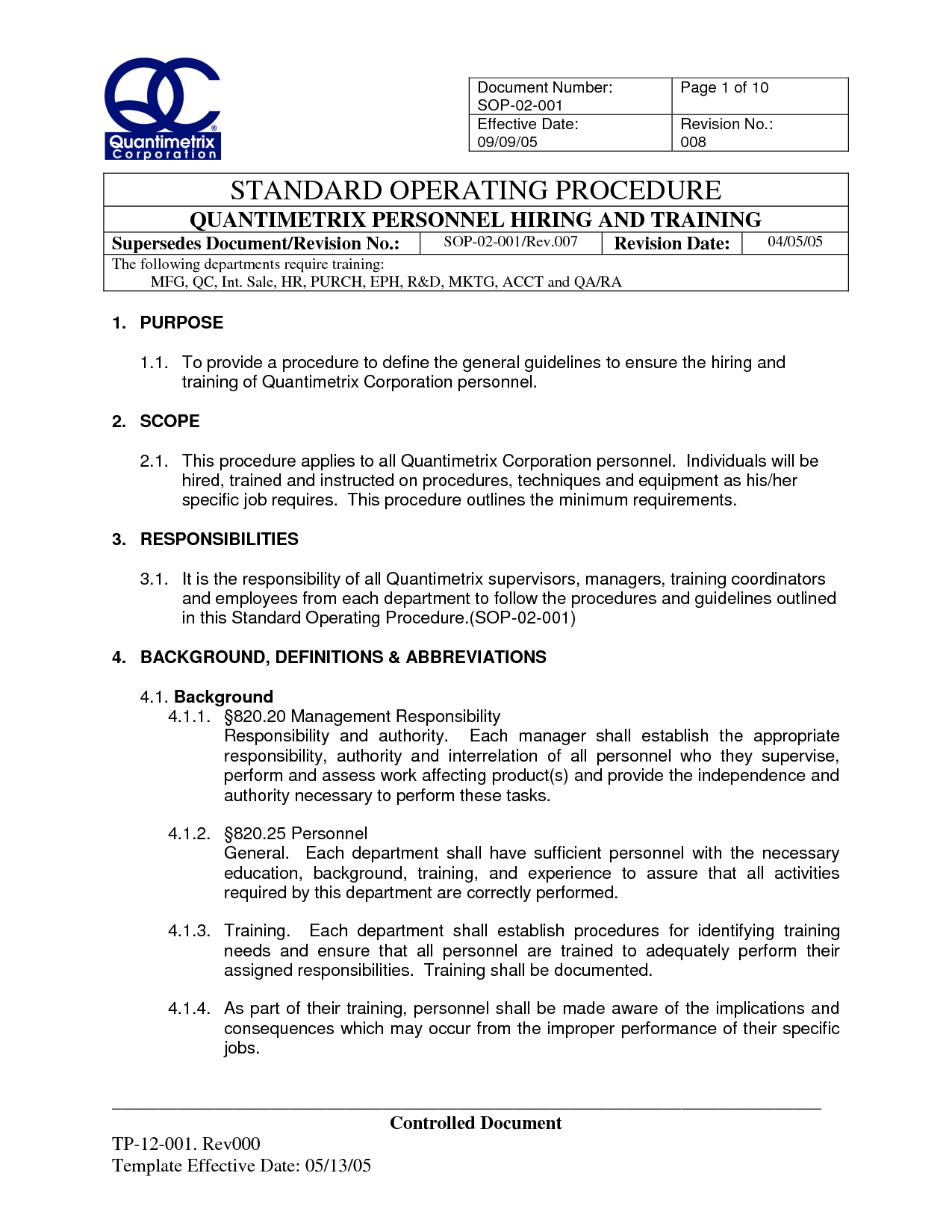
White papers
White papers are academic documents that speak about a specific topic and have the goal of persuading readers into a new paradigm.
They are often used in lead generation funnels to capture middle or bottom-of-the-funnel prospects.
Similar to other forms of technical content, whitepapers are professional and serious in nature.
They require sources, visuals, and data to back up any points that are made.
Business plans
As you can presume, business plans are written to plan out a business idea or new company.
They are used for the benefit of the business owners to set goals, organize strategies, and create milestones for receiving funding.
Banks and lenders will often require a business plan before investing in entrepreneurs to ensure that their capital will be used properly.
Business plans are often dozens of pages long and very complex.
There will be chapters on finances, marketing strategies, members of the company, and more.
Case studies
Case studies are real-life examples of identifying and solving a problem with practical takeaways for the audience.
It’s common for companies to use case studies to display how they helped previous clients achieve certain results.
Standard sections of a case study include:
- Problem: What issue did the client face that needed to be solved? Make this relevant to the audience’s situation to capture their attention and emotions.
- Solution: Thoroughly explain what strategies and plans were used to resolve the problem.
- Results: Present data and metrics of the results that were achieved.
Technical writing tips
Now that you understand what technical writing is and the various types of material that are often produced, here are some technical writing best practices to help you become a better writer.
1. Use visuals to aid text
It doesn’t matter if you’re creating a manual, whitepaper, or anything in between, it’s useful to provide visuals to accompany steps and instructions.
This helps to improve whatever you’re writing about, making it easier for the end user to understand.
For example, you might include pictures of a website’s navigation when explaining how to get to a certain page.
2. Make it as practical as possible
Technical material is technical, which means that it dives into fine details.
Don’t be afraid to lay out instructions for the simplest of steps because that’s what technical content is made for.
The reader should be able to apply the information right away and not be confused about the next step.
3. Carefully review the finished product
The editing and proofreading process is often a very underrated step in copywriting.
However, it’s extremely important.
At the end of your project, make sure to take time to review every unit, sentence, and word.
Edit it to make it flow better, remove sections that are unnecessary, and fix any mistakes you made along the way.
4. Make an outline for the entire project before beginning writing
One of the most effective strategies for improving the writing process and avoiding writer’s block is simply creating an outline before you begin.
This allows you to know what you’re going to write about next ahead of time.
You don’t have to scratch your head and stare at a cursor as you wait for the next idea to pop up.
I’d also suggest not being a perfectionist the first time around. Think of it as a first draft.
Get the general idea and instructions down on paper(or screen, more likely).
Then, take the time to edit and proofread the material while getting input from other people in your team.
When I wrote technical material as a freelance copywriter, I often interviewed and was close with product leads and similar roles since I required their critique.
5. Collect resources beforehand
One of the first things I like to do as a writer before I start writing any project is to collect and organize resources.
You should have all of the information you need to be laid out in front of you.
I’m talking about content guidelines, buyer personas, studies, internal documents, you name it. Anything to help you write better.
A lot of these can be collected by you on your own time, but some will be provided for you whether you’re working for a company or a private client.
Technical writing examples
Now that you understand what technical writing is and how to write technical material let’s look at some examples of technical writing.
MacBook manuals
Here’s the real question: Mac or PC?
I love both.
I’ve used Macs before, and they’re awesome machines, but a lot of the software I need is Windows-only, so I’m a PC guy these days.
Their manuals also happen to be excellent examples of great technical writing.
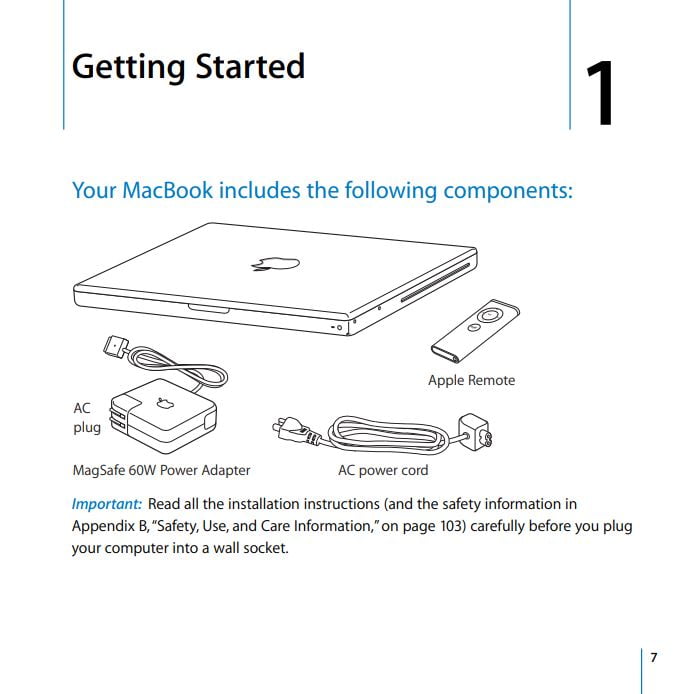
They offer over 150 different guides for the various types of MacBooks as free PDFs.
As you can see from the above image, these guides are very easy to understand, with large fonts and visuals to accompany every point.
Apple also guides users step-by-step through navigating the actual operating system.
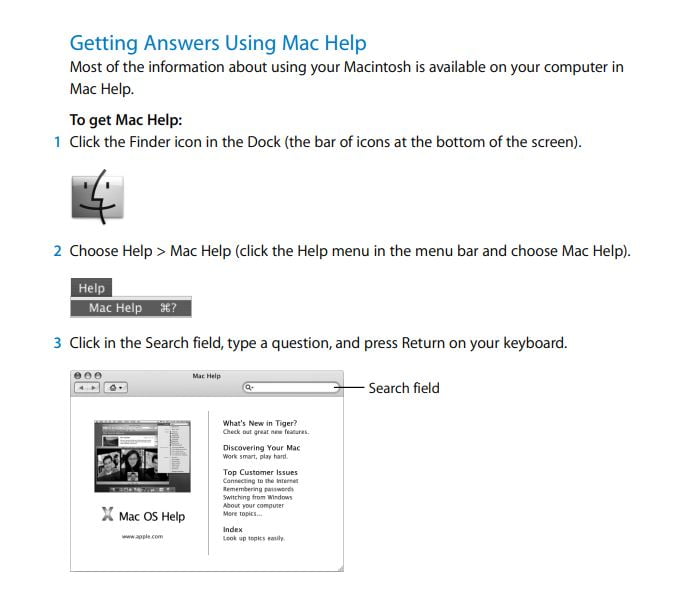
Technical writers can take notes by accompanying their next project with more visuals, screenshots, and easy-to-read fonts.
Shopify’s Help Center
The more technical the product, the more writing you will need.
That’s why Shopify, the largest e-commerce platform, has an insanely in-depth help center for customers.
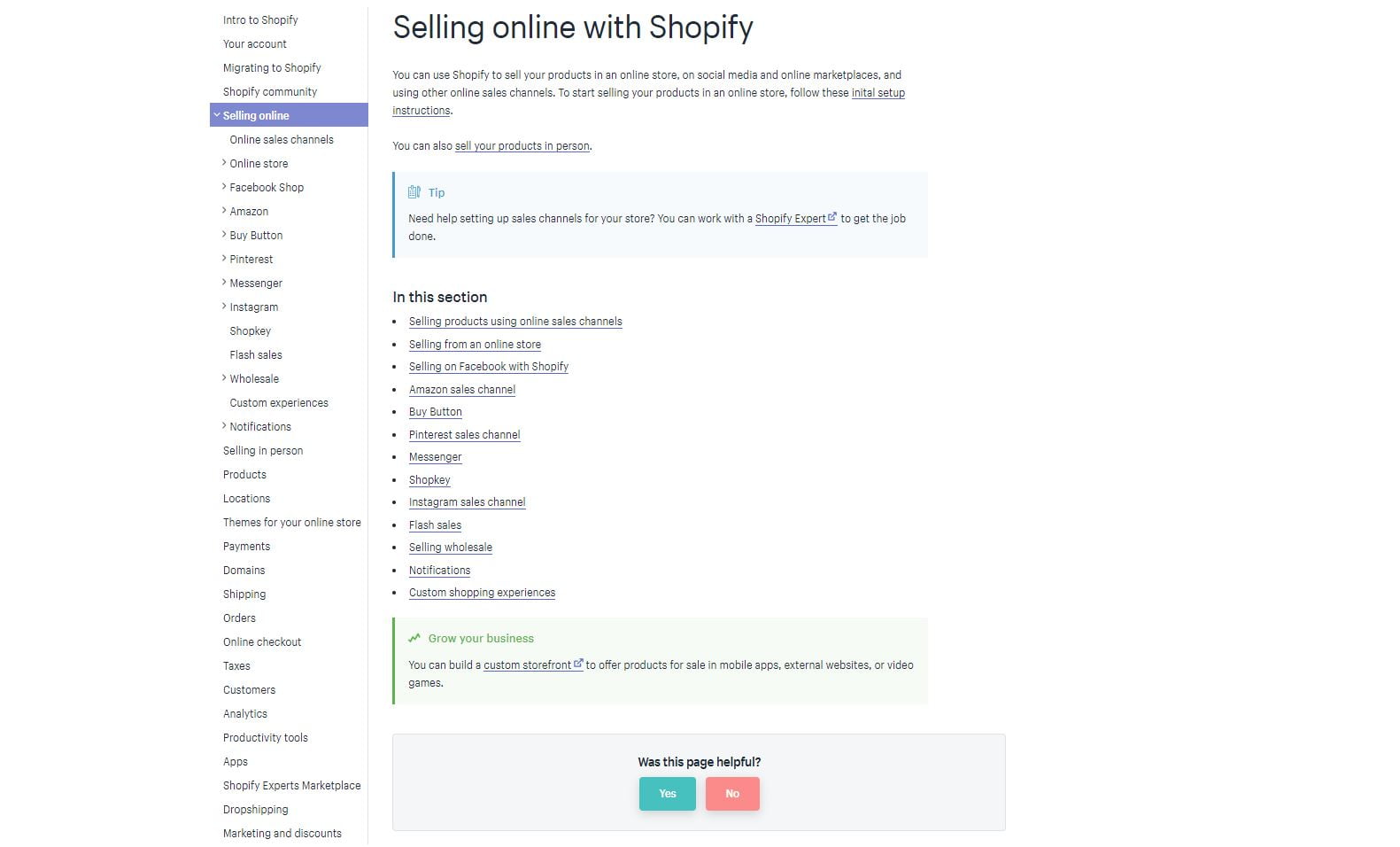
There are over 20 sections with at least a dozen sub-sections each!
It’s safe to say that no matter how niche of a question the customer may have, this help center will solve it.
Once again, this plays into the idea I spoke about earlier that technical writing should make the customer’s life as easy as possible. They shouldn’t have to contact support or go out of their way for 99% of situations with a guide like this.
Shopify also nails the principle of step-by-step instructions.
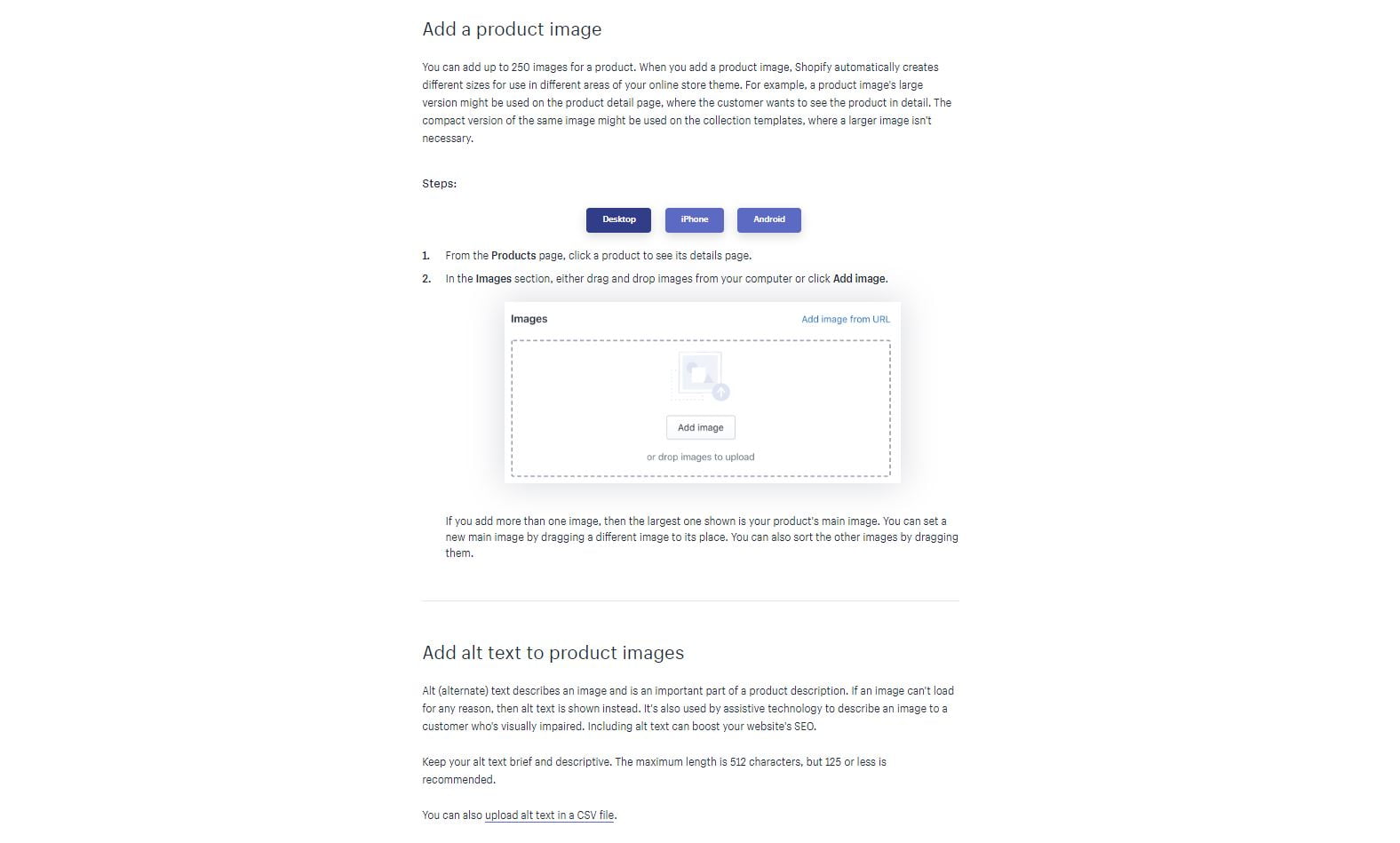
Every section of the help center includes simple instructions for accomplishing any task on their platform.
Another very interesting and unique feature they added is the ability to view each instruction for desktops, iPhones, or Android devices.
JP Morgan’s annual report
Here’s a cool one for you.
JP Morgan, A.K.A one of the biggest banks in the world, releases an annual report every year detailing their company’s performance.

The entire report covers the company’s principles, strategies, current issues, and policies across 300+ pages.
It’s safe to say that describing a major bank’s financials, strategies, and values isn’t the simplest thing in the world.
Some might say it’s quite technical.
JP Morgan takes advantage of charts and graphs throughout the report to organize data and explain its findings more easily.
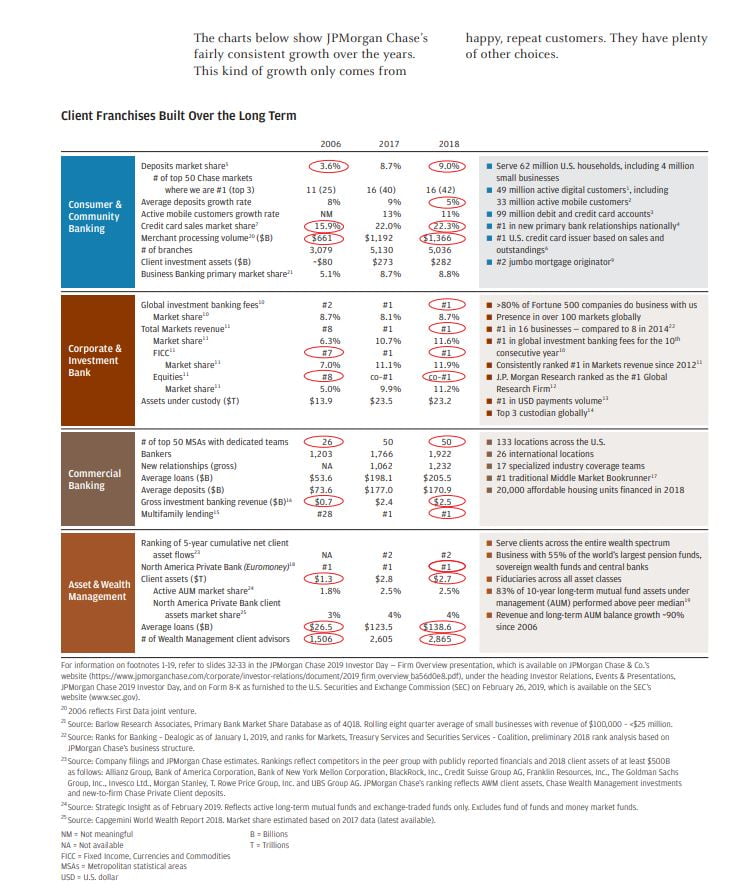
That’s a great takeaway for technical writers, too: sum up information in tables so readers can digest it quickly.
Unlike the Shopify and MacBook examples, the technical writers responsible for this impressive report had to focus on presenting data versus teaching it.
Think about who is going to read your content and the intent behind it that being said.
In the case of Shopify and Apple, it was to educate customers on how to use a product.
In the case of JP Morgan, it’s to show investors and customers that they made a wise choice choosing this particular bank.
On that note, make sure to read my guide to content marketing for banks, as well.
Final thoughts on technical writing
Technical writing is the process of creating material like case studies, user manuals, and whitepapers.
The content is often professional and academic in nature.
Being a good technical writer requires you to have excellent research, organizational, and copywriting skills.
I suggest taking advantage of visuals, step-by-step instructions, and carefully reviewing to maximize the quality of the end result.
Enroll in my copywriting courses to get mentorship from me and greatly increase your writing skills and income.














